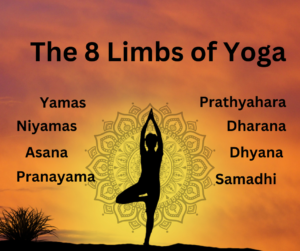Yoga, often perceived in the West as a series of physical postures and breathing exercises, is far more profound and comprehensive in its true essence. Rooted in ancient Indian philosophy, yoga is a spiritual and ascetic discipline encompassing physical, mental, and spiritual practices aimed at attaining a state of permanent peace and self-realization. The philosophy of yoga provides a pathway to understanding the self and the universe, promoting harmony and balance in one’s life.
Historical Background
The origins of yoga can be traced back over 5,000 years to the Indus Valley Civilization. The earliest mention of the practice is found in the Rigveda, one of the oldest sacred texts of Hinduism. However, the systematization of yoga philosophy is credited to the sage Patanjali, who compiled the Yoga Sutras around 400 CE. These sutras outline the eightfold path of yoga, known as Ashtanga Yoga, which forms the foundation of classical yoga philosophy.
The Eightfold Path of Yoga
 Patanjali’s Ashtanga Yoga consists of eight limbs, each representing a step towards achieving spiritual enlightenment and self-mastery:
Patanjali’s Ashtanga Yoga consists of eight limbs, each representing a step towards achieving spiritual enlightenment and self-mastery:
- Yama: Ethical disciplines or moral codes, which include non-violence (Ahimsa), truthfulness (Satya), non-stealing (Asteya), continence (Brahmacharya), and non-possessiveness (Aparigraha).
- Niyama: Personal observances, such as purity (Saucha), contentment (Santosha), austerity (Tapas), self-study (Svadhyaya), and surrender to a higher power (Ishvara Pranidhana).
- Asana: Physical postures designed to purify the body and provide physical strength and stamina. Asanas prepare the body for prolonged meditation.
- Pranayama: Breath control practices that enhance the flow of vital energy (prana) within the body, promoting physical and mental stability.
- Pratyahara: Withdrawal of the senses from external objects, allowing the practitioner to focus inwardly and prepare for deeper stages of meditation.
- Dharana: Concentration or focused attention, which involves fixing the mind on a single point or object.
- Dhyana: Meditation, a state of uninterrupted flow of concentration, leading to profound inner peace and awareness.
- Samadhi: The ultimate state of union with the divine, characterized by complete absorption and self-realization.
The Philosophical Foundations
Yoga philosophy is deeply intertwined with the concepts of Samkhya, Vedanta, and Tantra. These philosophical systems provide a metaphysical framework for understanding the nature of existence and the self.
- Samkhya: One of the six classical schools of Indian philosophy, Samkhya outlines a dualistic framework of reality, distinguishing between Purusha (consciousness) and Prakriti (matter). Yoga aims to disentangle the self (Purusha) from the material world (Prakriti) to achieve liberation.
- Vedanta: Based on the teachings of the Upanishads, Vedanta emphasizes the non-dual nature of reality. According to Vedanta, the individual self (Atman) is identical with the universal consciousness (Brahman). Yoga practices, particularly meditation, help realize this fundamental unity.
- Tantra: Tantra views the universe as a manifestation of divine energy and emphasizes the importance of ritual practices, mantra chanting, and visualization techniques to harness this energy for spiritual growth.
The Role of Meditation and Mindfulness
Central to yoga philosophy is the practice of meditation and mindfulness. Meditation serves as a tool to quiet the mind, transcend egoic limitations, and experience the true nature of the self. Mindfulness, the practice of being fully present in each moment, cultivates a deep awareness of one’s thoughts, emotions, and actions, fostering a state of inner harmony and balance.
The Modern Relevance of Yoga Philosophy
In today’s fast-paced and often chaotic world, the philosophy of yoga offers timeless wisdom and practical tools for achieving physical, mental, and spiritual well-being. The ethical principles of Yama and Niyama provide a moral compass for living a virtuous and fulfilling life. The practices of Asana and Pranayama enhance physical health and vitality, while the meditative aspects of Pratyahara, Dharana, Dhyana, and Samadhi guide individuals towards profound self-awareness and inner peace.
Yoga philosophy teaches that true happiness and fulfillment come from within. By embracing the principles and practices of yoga, individuals can navigate the challenges of life with grace, equanimity, and a deep sense of purpose. Ultimately, the journey of yoga is a journey towards self-realization, revealing the interconnectedness of all beings and the divine essence that resides within each of us.

No responses yet